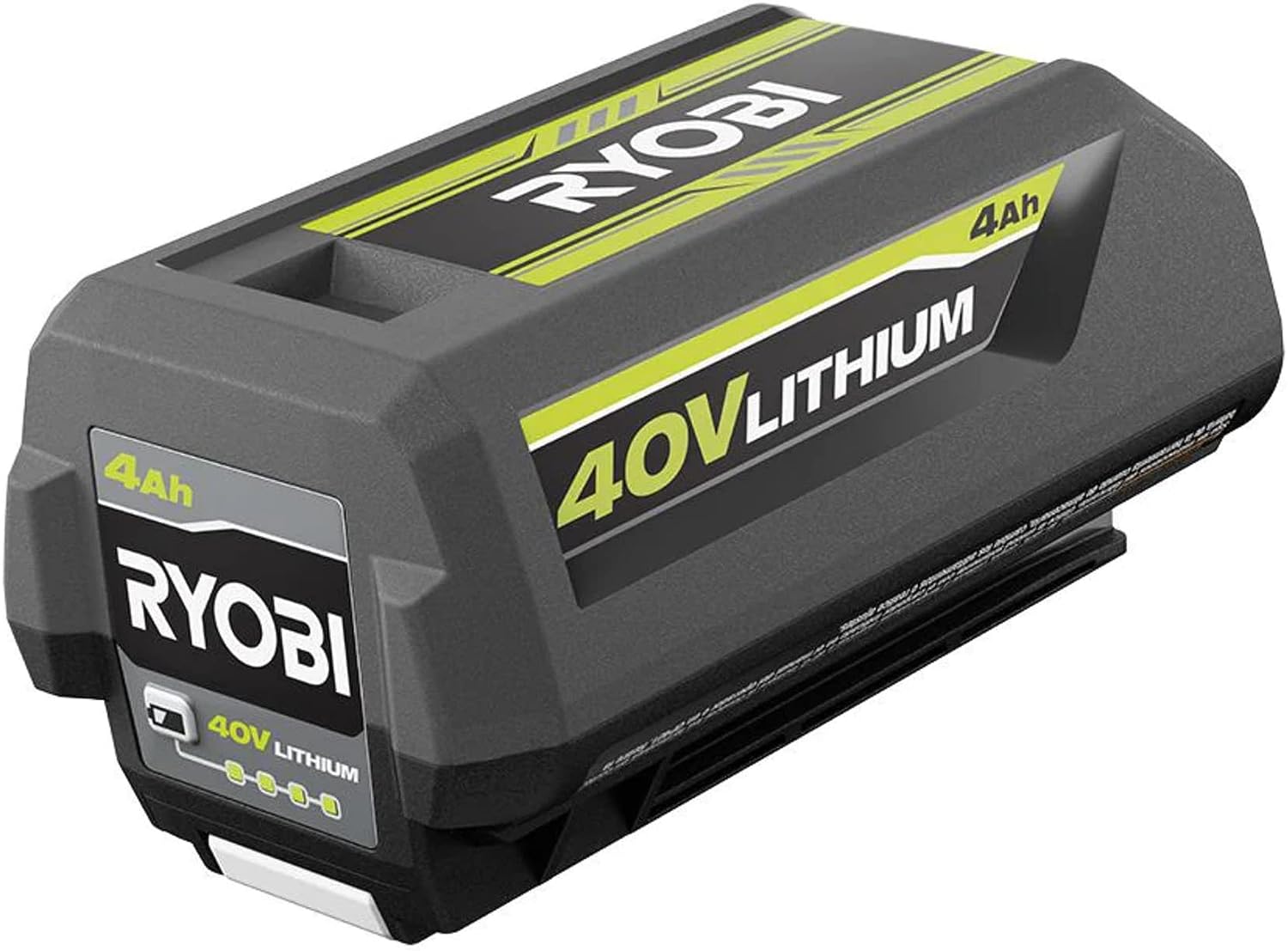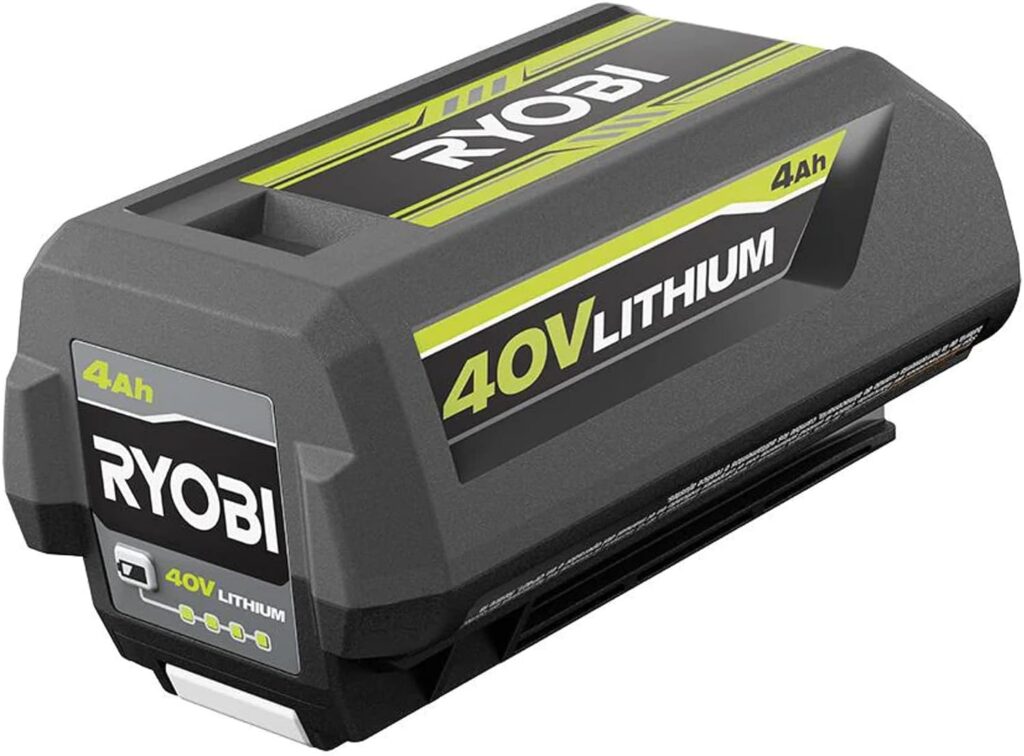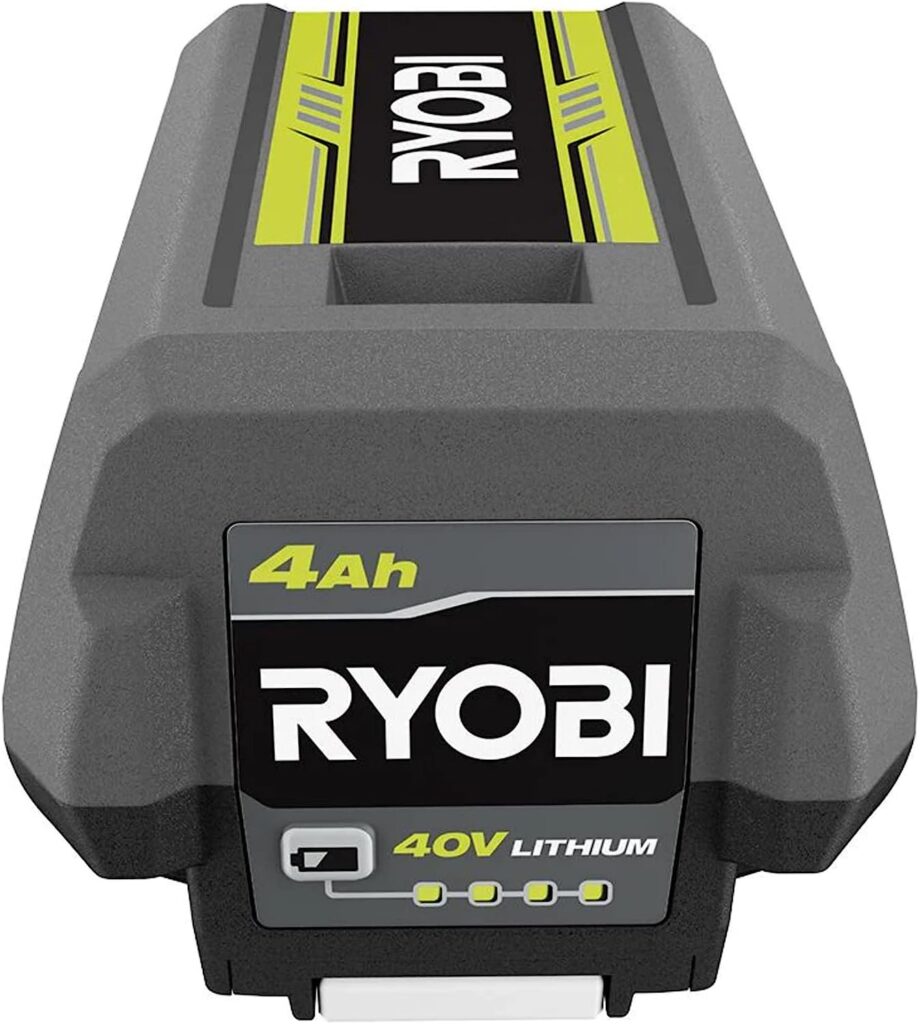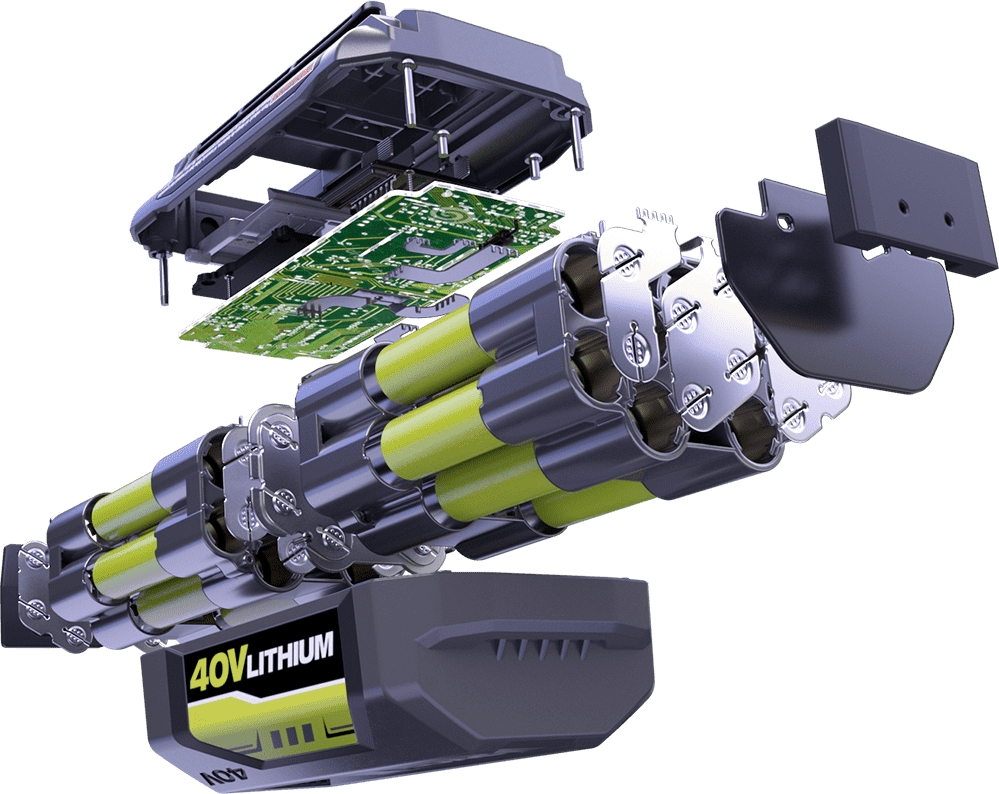Powering Up: Guide to 40-Volt Ryobi Battery
In the realm of power tools, the significance of batteries cannot be overstated. These compact energy storage units serve as the lifeblood of modern power tools, enabling portability, flexibility, and efficiency in various applications. With advancements in battery technology, the landscape of power tools has undergone a transformative evolution, empowering both professionals and DIY enthusiasts alike. Talking of batteries, we cannot ignore cornerstone products like 40 Volt Ryobi Battery. However, before we discuss that, let’s talk about the importance of batteries in power tools.
Importance of Batteries in Power Tools
At the core of every cordless power tool lies a battery, functioning as the primary source of power. Unlike their corded counterparts, battery-powered tools offer unparalleled freedom of movement, unencumbered by the constraints of power cords and outlets. This liberation has revolutionized industries ranging from construction to woodworking, allowing for increased productivity and precision in the field.
Furthermore, batteries have become the linchpin of sustainability in the power tool industry. With a focus on reducing emissions and minimizing environmental impact, lithium-ion batteries have emerged as the leading choice, striking a balance between performance and eco-consciousness.
What make Ryobi 40 Volt Battery Special?
Among the array of power tool batteries available, the Ryobi 40 Volt battery stands as a distinguished exemplar of engineering excellence. Engineered by Ryobi, an industry leader renowned for its commitment to quality and innovation, the 40-Volt battery exemplifies a harmonious fusion of cutting-edge technology and practical utility. Designed to power a diverse range of tools, this battery system has earned a reputation for its remarkable performance and reliability.
The purpose of this blog post is to provide a comprehensive guide to the 40-Volt Ryobi battery, delving into its technical specifications, operational nuances, and practical applications. Each section is curated to furnish readers with a thorough understanding of the battery’s capabilities, ensuring they are equipped to make informed decisions regarding its adoption in their tool arsenal. This post is an authoritative resource for those seeking to harness the full potential of the Ryobi 40-Volt battery, enabling them to make educated choices in their pursuit of efficient, cordless power tools.
Understanding the Ryobi 40 Volt Battery
The Ryobi 40 Volt battery system represents a significant advancement in power tool technology, providing a reliable and versatile power source for a range of applications. This section aims to provide a comprehensive understanding of the technical specifications, advantages, types, and considerations associated with the Ryobi 40-Volt battery.
A. Technical Specifications
1. Voltage and Capacity:
-
- The Ryobi 40-Volt battery operates at a nominal voltage of 40 volts, making it suitable for high-powered tools. This elevated voltage allows for increased torque and performance compared to lower-voltage counterparts.
- Capacity refers to the amount of charge a battery can store, measured in ampere-hours (Ah). The 40-Volt Ryobi battery is available in various capacities to accommodate different user needs and preferences.
2. Battery Chemistry:
-
- The Ryobi 40-Volt battery utilizes lithium-ion technology, which offers a balanced blend of energy density, weight, and longevity. Lithium-ion batteries are known for their high energy density, ensuring prolonged operation and reduced downtime.
3. Compatibility with Ryobi Tools:
-
- Designed specifically for Ryobi power tools, the 40-Volt battery seamlessly integrates with a wide range of equipment within the Ryobi ecosystem. This compatibility ensures optimal performance and reliability, enhancing the user’s overall experience.
B. Advantages of the 40-Volt System
- Enhanced Power: With a nominal voltage of 40 volts, the system provides ample power to tackle demanding tasks with ease. This translates to increased efficiency and productivity in a variety of applications.
- Extended Runtime: Higher voltage and capacity equate to longer runtimes, reducing the frequency of battery changes during a task. This feature is particularly valuable for extended projects or professional applications.
- Compatibility Across Tools: The 40-Volt system is designed to work seamlessly with a diverse array of Ryobi power tools. This cross-compatibility allows users to leverage their battery investment across multiple tools, offering convenience and cost savings.
C. Types of Ryobi 40-Volt Batteries Available
1. Standard Lithium-Ion:
This is the foundational offering in the 40-Volt series, providing reliable performance for a broad spectrum of tasks. It strikes a balance between capacity, weight, and cost-effectiveness.
2. High-Capacity Lithium-Ion:
The high-capacity variant offers an elevated ampere-hour rating, providing extended runtime for demanding applications. This option is well-suited for tasks that require prolonged periods of continuous operation.
3. Lithium HP for High-Performance Tools:
Engineered for high-performance tools, the Lithium HP battery offers increased power output and efficiency. It is designed to meet the demands of more robust applications, ensuring optimal performance and durability.
D. Pros and Cons of the 40-Volt Ryobi Battery
Pros:
-
- Powerful Performance: The 40-Volt system provides ample power for a wide range of tasks, enabling users to tackle even the most demanding applications.
- Extended Runtime: With higher capacity options available, the 40-Volt battery offers extended periods of operation, reducing the need for frequent recharging.
- Tool Compatibility: The 40-Volt battery is designed to seamlessly integrate with a diverse selection of Ryobi power tools, offering versatility and convenience to users.
Cons:
-
- Weight: Due to the higher voltage and capacity, 40-Volt batteries may be slightly heavier than lower-voltage alternatives. This factor should be considered when selecting a battery for specific applications.
- Cost: While offering enhanced performance, the 40-Volt system may entail a higher initial investment compared to lower-voltage options. Users should weigh the benefits against their specific requirements and budget constraints.
The Ryobi 40-Volt battery system represents a formidable advancement in power tool technology, offering a blend of power, runtime, and versatility that caters to both DIY enthusiasts and professionals. Understanding its technical specifications, advantages, available types, and considerations ensures informed decision-making when integrating this battery into one’s tool arsenal.
Getting Started with Your 40-Volt Ryobi Battery
Initial setup and charging:
The first step in harnessing the full potential of your 40-Volt Ryobi battery is to ensure a proper initial setup and charging process. This not only ensures optimal performance but also extends the battery’s lifespan.
- Inspect the Battery: Before the initial use, carefully inspect the battery for any visible damage or irregularities. If any issues are detected, refrain from using the battery and contact Ryobi customer support.
- Charging Procedure: Utilize the provided charger compatible with the 40-Volt Ryobi battery. Insert the battery into the charger, ensuring proper alignment. The charger’s indicator lights will provide visual cues regarding the charging progress. It is crucial to allow the battery to reach a full charge before initial use.
- Charging Time: Typically, a 40-Volt Ryobi battery will take approximately 90 minutes to reach a full charge. However, this duration may vary based on factors such as the battery’s state of charge and environmental conditions.
Proper maintenance tips:
Maintaining your 40-Volt Ryobi battery is paramount for consistent and reliable performance. Following these maintenance guidelines will optimize its longevity and efficiency.
- Regular Use: Utilize the battery on a regular basis to keep it in optimal condition. Periodic use prevents the battery from becoming dormant, which can lead to reduced performance over time.
- Storage Environment: Store the battery in a cool, dry place, away from direct sunlight and extreme temperatures. Avoid leaving it in a charged or depleted state for extended periods, as this can impact its overall lifespan.
- Charge Management: It is recommended to recharge the battery once it reaches approximately 20% of its remaining capacity. Avoid completely depleting the battery, as this can lead to diminished performance over time.
Safety precautions:
Ensuring the safety of both the user and the battery itself is of utmost importance. Adhering to these precautions will mitigate potential hazards associated with handling and storing the 40-Volt Ryobi battery.
1. Handling and Storage:
- Avoid Dropping or Impact: Handle the battery with care to prevent any physical damage. Avoid dropping it or subjecting it to sudden impacts, as this can compromise its internal components.
- Separate from Conductive Materials: When storing the battery, ensure it is kept away from conductive materials such as metal objects or surfaces. This precaution minimizes the risk of short-circuiting.
- Insulation during Transportation: If transporting the battery, ensure it is properly insulated to prevent contact with other objects that could potentially cause a short circuit.
2. Avoiding Overcharging and Overheating:
- Utilize the Recommended Charger: Always use the charger specifically designed for the 40-Volt Ryobi battery. Using incompatible chargers can lead to overcharging, which can be hazardous.
- Monitor Charging Process: Regularly check the charging progress and remove the battery from the charger once it reaches a full charge. Overcharging can lead to overheating and, in extreme cases, damage to the battery.
- Avoid Charging in Extreme Temperatures: Refrain from charging the battery in excessively hot or cold environments. Extreme temperatures can lead to accelerated degradation of the battery’s performance.
By adhering to these initial setup, maintenance, and safety guidelines, you will ensure that your 40-Volt Ryobi battery operates at its highest capacity, providing you with reliable power for your tools and equipment.
Maximizing Performance
Battery Life and Longevity
1.Tips for Extending Battery Life
Preserving the longevity of your 40-Volt Ryobi battery is paramount to ensure consistent and reliable performance. Here are several key practices to consider:
Proper Charging Habits:
-
-
- Utilize the Ryobi charger designed for 40-Volt batteries to prevent overcharging or undercharging.
- Avoid leaving the battery on the charger for extended periods after it reaches full capacity.
-
Ideal Storage Conditions:
-
-
- Store the battery in a cool, dry place away from direct sunlight or extreme temperatures.
- Ensure the battery is not fully depleted before storage; maintaining a partial charge is recommended.
-
Regular Use and Maintenance:
-
-
- Periodically cycle the battery by using it in your tools and recharging it.
- Inspect the battery for any signs of physical damage or corrosion and address any issues promptly.
-
Avoiding Deep Discharge:
-
-
- Refrain from running the battery to complete depletion, as this can lead to irreversible damage.
- Recharge the battery when its charge level drops to around 20-30%.
-
2.Recognizing Signs of a Worn-Out Battery
Being able to identify indications of a deteriorating battery is crucial for timely replacement. Watch out for these signs:
Reduced Runtime:
-
-
- If the battery provides significantly shorter operating time compared to its initial performance, it may be nearing the end of its lifespan.
-
Increased Heat Generation:
-
-
- Excessive heat during use or charging can be indicative of internal issues within the battery pack.
-
Noticeable Drop in Power Output:
-
-
- Tools may exhibit diminished performance, struggling to deliver the expected power.
-
Getting the Most Out of Your Tools
1. Power and Runtime Expectations
Understanding the capabilities of your 40-Volt Ryobi battery in tandem with your tools is key to optimizing performance. Consider the following:
Power Output Ratings:
Familiarize yourself with the power requirements of each tool to ensure compatibility with the 40-Volt system.
Estimating Runtime:
Factors such as tool type, workload, and battery capacity influence the duration of uninterrupted operation. Refer to manufacturer specifications for runtime estimates.
2. Matching Tools with the Appropriate Battery
Selecting the right battery for each tool in your arsenal is a strategic approach to maximizing efficiency:
Capacity Considerations:
High-demand tools benefit from high-capacity batteries, while lighter-duty tools can function optimally with standard capacity options.
Tool Compatibility:
Ensure that the battery is compatible with the specific model of your tool to avoid operational issues or potential damage.
Common Issues and Troubleshooting
Despite meticulous care, occasional issues may arise. Here are common concerns and suggested troubleshooting steps:
- Uneven Charging: Check for debris or corrosion on the battery contacts and clean them if necessary. Verify the charger and battery connections are secure.
- Faulty Indicators: Reset the battery by removing it from the charger, waiting a few minutes, and reinserting it. If the issue persists, consult the user manual or contact Ryobi support.
- Overheating During Use: Allow the battery to cool down before resuming use. If the problem persists, ensure the tool is suitable for the battery’s power output and consult the user manual.
By following these guidelines, users can optimize the performance and longevity of their 40-Volt Ryobi battery, ensuring reliable and efficient operation for an extended period.
Ryobi’s 40-Volt Tool Lineup
Ryobi’s 40-Volt tool lineup represents a comprehensive suite of high-performance power tools designed to cater to a diverse range of applications. Engineered with precision and durability in mind, this collection encompasses an array of essential tools that serve both professional tradespeople and avid DIY enthusiasts.
Within this ecosystem, users can expect to find a wide assortment of tools such as cordless lawn mowers, hedge trimmers, chainsaws, leaf blowers, string trimmers, and more. Each of these tools is meticulously engineered to operate seamlessly with the 40-Volt battery platform, ensuring consistent power delivery and enhanced performance across various tasks.
Compatibility with Other Ryobi ONE+ Tools
One of the standout features of Ryobi’s 40-Volt system lies in its compatibility with other tools within the Ryobi ONE+ family. This interoperability grants users the flexibility to leverage their existing inventory of Ryobi ONE+ tools, typically designed for 18-Volt batteries, alongside the 40-Volt lineup. This cross-compatibility significantly expands the utility of the 40-Volt ecosystem, allowing users to interchange batteries across a broad spectrum of tools.
This seamless compatibility underscores Ryobi’s commitment to providing a holistic and cost-effective solution for power tool enthusiasts. It not only simplifies the transition for existing Ryobi users but also offers a compelling reason for newcomers to invest in the 40-Volt platform.
Expanding Your Collection with Additional Batteries
Investing in additional batteries is a strategic move to augment the operational efficiency and versatility of Ryobi’s 40-Volt ecosystem. By acquiring supplementary batteries, users can ensure uninterrupted workflow by seamlessly swapping depleted batteries with fully charged counterparts. This practice is particularly invaluable for tasks demanding extended runtimes or in situations where access to charging facilities is limited.
Moreover, different battery variants, such as high-capacity or Lithium HP, can be tailored to specific tool requirements, enabling users to optimize performance based on the task at hand. This adaptability further solidifies the 40-Volt system’s position as a robust and versatile solution for a multitude of applications.
Ryobi’s 40-Volt ecosystem presents a compelling array of tools, engineered for precision and durability. The seamless compatibility with the Ryobi ONE+ family, coupled with the option to expand the battery collection, enhances the versatility and efficiency of this platform, making it an attractive choice for both professionals and DIY enthusiasts seeking reliable and high-performance power tools.
Conclusion
In the pursuit of efficiency, power, and reliability, the 40-Volt Ryobi Battery emerges as a commendable choice for discerning professionals and DIY enthusiasts alike. Throughout this comprehensive guide, we’ve delved into the technical specifications, advantages, maintenance protocols, and strategies to maximize performance.
The 40-Volt Ryobi Battery, underpinned by cutting-edge lithium-ion technology, offers a robust power source for an array of tools. Its commendable voltage and capacity render it a versatile companion, delivering ample runtime to support various applications.
By adhering to recommended maintenance practices, users can significantly extend the lifespan of their 40-Volt Ryobi Battery. Vigilance towards avoiding overcharging, overheating, and recognizing signs of battery degradation are fundamental to ensuring consistent, reliable performance.
The integration of the 40-Volt system within Ryobi’s extensive ecosystem provides users with a seamless, cross-compatible experience. This synergistic relationship between battery and tool empowers users to tackle diverse projects with confidence.
In evaluating alternatives and comparisons, the 40-Volt Ryobi Battery stands as a competitive choice within the landscape of power tool batteries. Its balance of voltage, capacity, and compatibility positions it as a reliable option for both professional tradesmen and dedicated DIYers.



